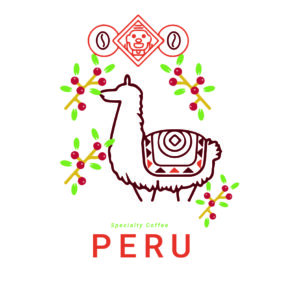Caricafe’s presence in Perú, throughout the years, has increased our outreach into the market for high quality coffee and together with top suppliers, our goal aims to bolster our competitive business model.
Caricafe’s presence in Perú, throughout the years, has increased our outreach into the market for high quality coffee and together with top suppliers, our goal aims to bolster our competitive business model.
Amazonas is located in the north east of the country. It borders the Republic of Ecuador to the north, Loreto and San Martín to the east, La Libertad to the south, and, to the west, Cajamarca. Politically, the region is divided into seven provinces. Its capital is the city of Chachapoyas. Coffee grows in all seven provinces. Amazonas has two natural regions: mountains and jungle. The latter is home to the coffee growing areas, where the elevation ranges between 900 and 2100 meters above sea level. The climate is warm and temperate in the valleys and warm in the gorges. Traversed from south to north by the western Andes, the terrain is relatively rugged.

Puno is located in the southeastern extreme of the country. It borders Madre de Dios to the north, the Republic of Bolivia to the east, Tacna and Bolivia to the south, and, to the west, with Moquegua, Arequipa, and Cusco. Politically, the region is divided into thirteen provinces. Its capital is the city of Puno. Its coffee is grown almost entirely in the province of Sandia. Puno has two natural regions: mountains and jungle. The latter is home to the coffee growing areas, where the elevation ranges between 900 and 1800 meters. The climate is temperate in the valleys and warm in the gorges. Due to the diversity of altitudinal floors, it has a varied geography and cultural diversity.

Cajamarca is located in the north of the country. It borders the Republic of Ecuador to the north, Amazonas to the east, La Libertad to the south, and, to the west, with Lambayeque and Piura. Politically, the region is divided into thirteen provinces. Its capital is the city of Cajamarca. Its coffee grows almost entirely in the provinces of Jaén and San Ignacio. Cajamarca has two natural regions: mountains and jungle. The latter is home to the coffee growing areas, where the elevation ranges between 900 and 1950 meters. Traversed from south to north by the western Andes, the terrain is relatively rugged.

Cusco is located in the south east of the country. It borders Ucayali to the north, Arequipa and Puno to the south, Madre de Dios and Puno to the east, and, to the west, with Arequipa, Apurímac, and Ayacucho. Politically, the region is divided into thirteen provinces. Its capital is the city of Cusco. Its coffee is grown almost entirely in the province of La Convención. Cusco has two natural regions: mountains and jungle. The latter is home to the coffee growing areas, where the elevation ranges between 900 and 2000 meters. The climate is temperate in the valleys and warm in the gorges. Due to the diversity of altitudinal floors, the region possesses a wide variety of climates and phytogeographic landscapes.

Huánuco is located in the central east of the country. It borders San Martín to the north, Pasco to the south, Ucayali to the east, and, to the west, with Áncash. Politically, the region is divided into eleven provinces. Its capital is the city of Huánuco. Its coffee is grown almost entirely in the province of Leoncio Prado, located in Tingo María. Huánuco has two natural regions: mountains and jungle. The latter is home to the coffee growing areas, where the elevation ranges between 900 and 2000 meters. The climate is warm tropical to temperate in the valleys and gorges. Due to the great diversity of altitudinal floors, the surroundings of the coffee-growing areas include landscapes covered with forests, waterfalls, caves, and biological diversity.

Junín is located in the central part of the country. It borders Huancavelica and Ayacucho to the south, Pasco and Ucayali to the north, Cusco to the east, and, to the west, with Lima. Politically, the region is divided into nine provinces. Its capital is the city of Huancayo. Its coffee is grown almost entirely in the provinces of Chanchamayo and Satipo. Junín has two natural regions: mountains and jungle. The latter is home to the coffee growing areas, where the elevation ranges between 900 and 1800 meters. The climate is temperate in the valleys and warm in the gorges. Due to the diversity of altitudinal floors, the region possesses a wide variety of climates and phytogeographic landscapes.

Pasco is located on the eastern slopes and central part of the Andes. It borders Huánuco to the north, Junín to the south, Ucayali to the east, and, to the west, with Lima. Politically, the region is divided into three provinces. Its capital is the city of Cerro de Pasco. Its coffee is grown almost entirely in the province of Oxapampa. Pasco has two natural regions: mountains and jungle. The latter is home to the coffee growing areas, where the elevation ranges between 900 and 2000 meters. The climate is temperate in the valleys and warm in the gorges. Due to the diversity of altitudinal floors, the region possesses a wide variety of climates and phytogeographic landscapes.

Piura is located in the northeast of the country. It borders Tumbes and the Republic of Ecuador to the north, Cajamarca and Ecuador to the east, Lambayeque to the south, and, to the west, with the Pacific Ocean. Politically, the region is divided into eight provinces. Its capital is the city of Piura. Its coffee is grown almost entirely in the province of Huancabamba. Piura has two natural regions: coast and semitropical (semi-arid) inter-Andean valleys. The semitropical valleys are home to the coffee growing areas, where the elevation ranges between 900 and 2000 meters. The climate is semi-tropical (semi-arid). The relief is somewhat rugged.

San Martín is located in the northern and eastern part of the country. It borders Amazonas to the north, Huánuco to the south, Loreto to the east, and, to the west, with La Libertad. Politically, it is divided into ten provinces. Its capital is the city of Moyobamba. Its coffee is grown almost entirely in three provinces. San Martín has two natural regions: mountains and jungle. The latter is home to the coffee growing areas, where the elevation ranges between 900 and 1200 meters. It borders the eastern slopes of the Andes mountain range and, for that reason, has little elevation. Its highest peaks do not exceed 3000 meters. Tropical and subtropical climates predominate.

Ayacucho is located in the southern and central area of the Andes. It borders Junín to the north, Huancavelica to the northwest, Ica to the west, Arequipa to the south, Apurímac to the east, and, to northeast, with Cusco. Politically, the region is divided into eleven provinces. Its capital is the city of Cusco. Its coffee grows almost entirely in the provinces of La Mar and Huanta. Ayacucho has two natural regions: mountains and jungle. The latter is home to the coffee growing areas, where the elevation ranges between 900 and 1600 meters. The climate in the jungle area is tropical. Due to the diversity of altitudinal floors, the region possesses a wide variety of climates and phytogeographic landscapes.

Think about enjoying a freshly brewed cup in the morning while seeing mountains covered in glaciers, dense rainforests, or both. One of the few areas where you can achieve this with locally produced, freshly roasted coffee is Peru. Peruvian coffee, now one of the top ten producers of the bean worldwide, is beginning to draw the interest of more international specialty roasters.
